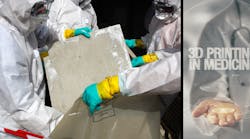Advancements in medical science seem to be happening at near-light speed. The mere idea of growing tissues and organs from stem cells seemed like science fiction a few years ago, but much of it is already a reality. 3D-printed lungs could very well hold the key to future treatments and cures for asbestos-related disease.
How 3D Printing Works
NASA is one of the largest users of current 3D printing construction. They can build tools that are made of durable, ultra-light materials for use in space. This same process of building layer upon layer of materials using a three-dimensional plan is being used to help construct organs with live cells and tissue. Layer by layer of cells are added, using collagen to hold everything in place. The “copied” organ will be made to the exact specifications given in the plans.
Asbestos-Related Lung Disease and Bio-printing Technology
Chronic lung disease and cancer caused by asbestos handling and exposure account for many types of illnesses that can end up life-threatening to the people diagnosed. Asbestosis, emphysema, chronic obstructed pulmonary disease (COPD), and pulmonary fibrosis are only a few of the serious health results from breathing in asbestos fibers. Mesothelioma can strike as many as 20 years after exposure (you can read more about this cancer here). The same bio-printing science that is used to create new healthy tissue and skin is now being employed to try and find the ultimate cure for serious lung disease.
A Boost in Traditional Lung Treatment for Asbestos-Damaged Lungs
Asbestos-related illnesses have the ability to develop into life-threatening problems like cancer. Malignancies can spread from the lungs, or tissues surrounding these vital organs, to the liver, heart, kidneys, and other spots through the circulatory and lymphatic system. Traditional treatments are surgery, chemotherapy, radiation, or other targeted medicinal tools. 3D lung printing can offer a perfect view of what is going on with your specific health condition for your medical team, giving it a greater advantage in devising a treatment strategy.
Ongoing research efforts will continue to improve the availability of helpful medications, improved treatments, and ultimately the ability to transplant new lungs that are custom-grown and disease-free. There is a belief within the medical research community that a permanent cure lies in the continued development of this technology, which can completely eradicate asbestos-related illness.

